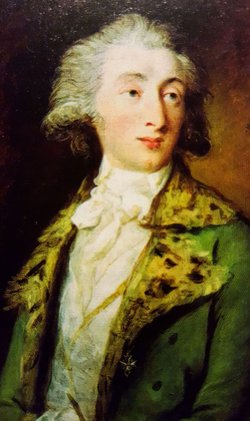In 1780 Count Józef Maksymilian Ossoliński brought him to Warsaw, where he painted several portraits of the Polish aristocracy. He then accompanied Count Jan Potocki on his travels through the Germany and the Netherlands. He was inducted into the Düsseldorf Academy of Arts in 1785. He then went to Paris, and then Italy, where he spent three years under Potocki's patronage studying the Old Masters and classical antiquities. In 1788 he was inducted into the Florentine Academy of Arts. He returned to Berlin in 1789.
In 1791 Bach was appointed director and professor of drawing and painting at the newly founded Academy of Arts in Breslau. In 1793 he was hired as the artistic director for the Proskau Faience Manufactory, where he introduced neoclassical motifs based on ancient models. In 1794 he was appointed as a member of the Royal Prussian Academy of Arts in Berlin.
Towards the end of his life Bach converted to the Protestant faith, thus when he died in Breslau has was buried in the Protestant Great Cemetery rather than the city's Jewish cemetery.
In 1780 Count Józef Maksymilian Ossoliński brought him to Warsaw, where he painted several portraits of the Polish aristocracy. He then accompanied Count Jan Potocki on his travels through the Germany and the Netherlands. He was inducted into the Düsseldorf Academy of Arts in 1785. He then went to Paris, and then Italy, where he spent three years under Potocki's patronage studying the Old Masters and classical antiquities. In 1788 he was inducted into the Florentine Academy of Arts. He returned to Berlin in 1789.
In 1791 Bach was appointed director and professor of drawing and painting at the newly founded Academy of Arts in Breslau. In 1793 he was hired as the artistic director for the Proskau Faience Manufactory, where he introduced neoclassical motifs based on ancient models. In 1794 he was appointed as a member of the Royal Prussian Academy of Arts in Berlin.
Towards the end of his life Bach converted to the Protestant faith, thus when he died in Breslau has was buried in the Protestant Great Cemetery rather than the city's Jewish cemetery.
Gravesite Details
Gravesite lost after cemetery liquidated.
Advertisement
Advertisement


